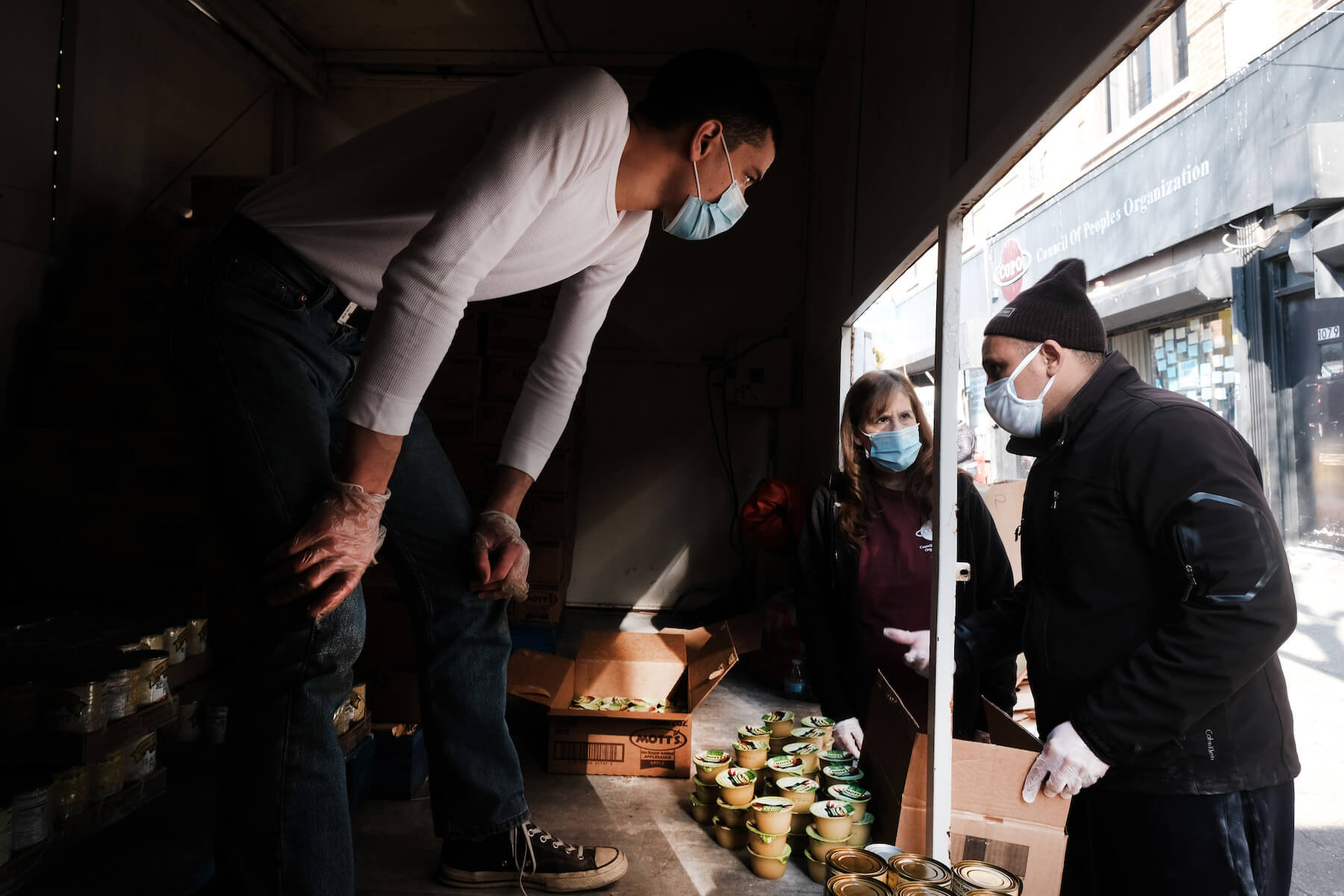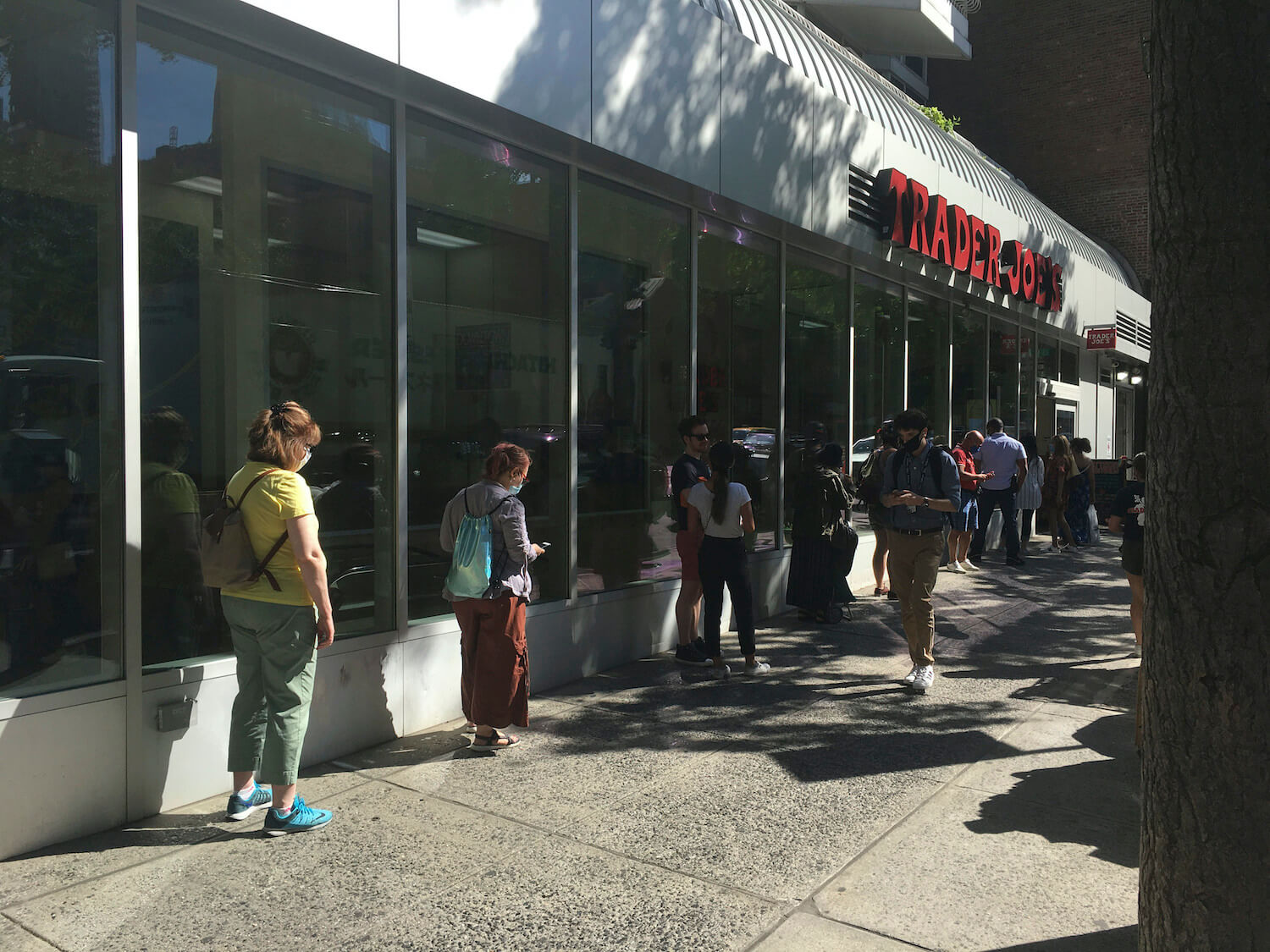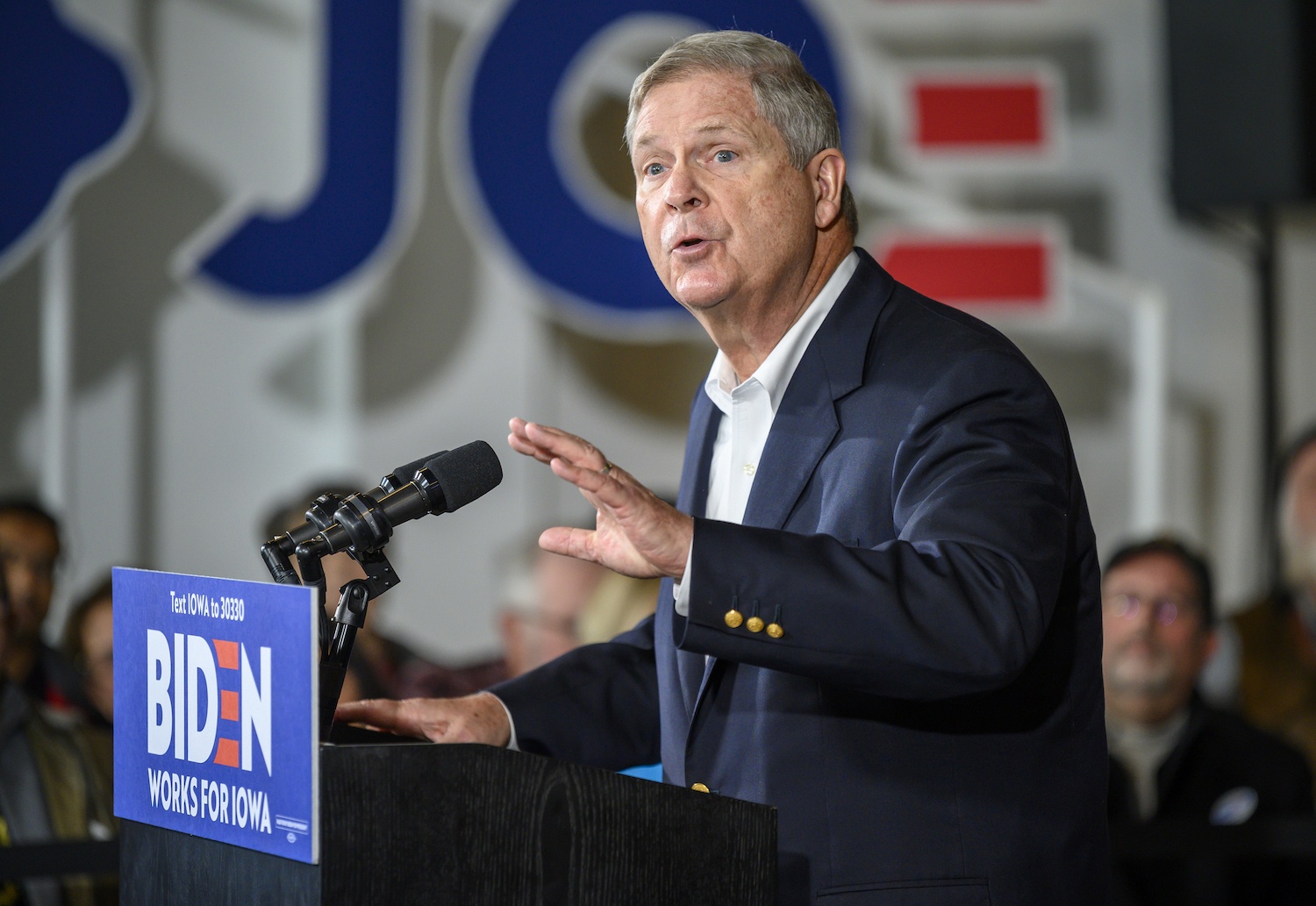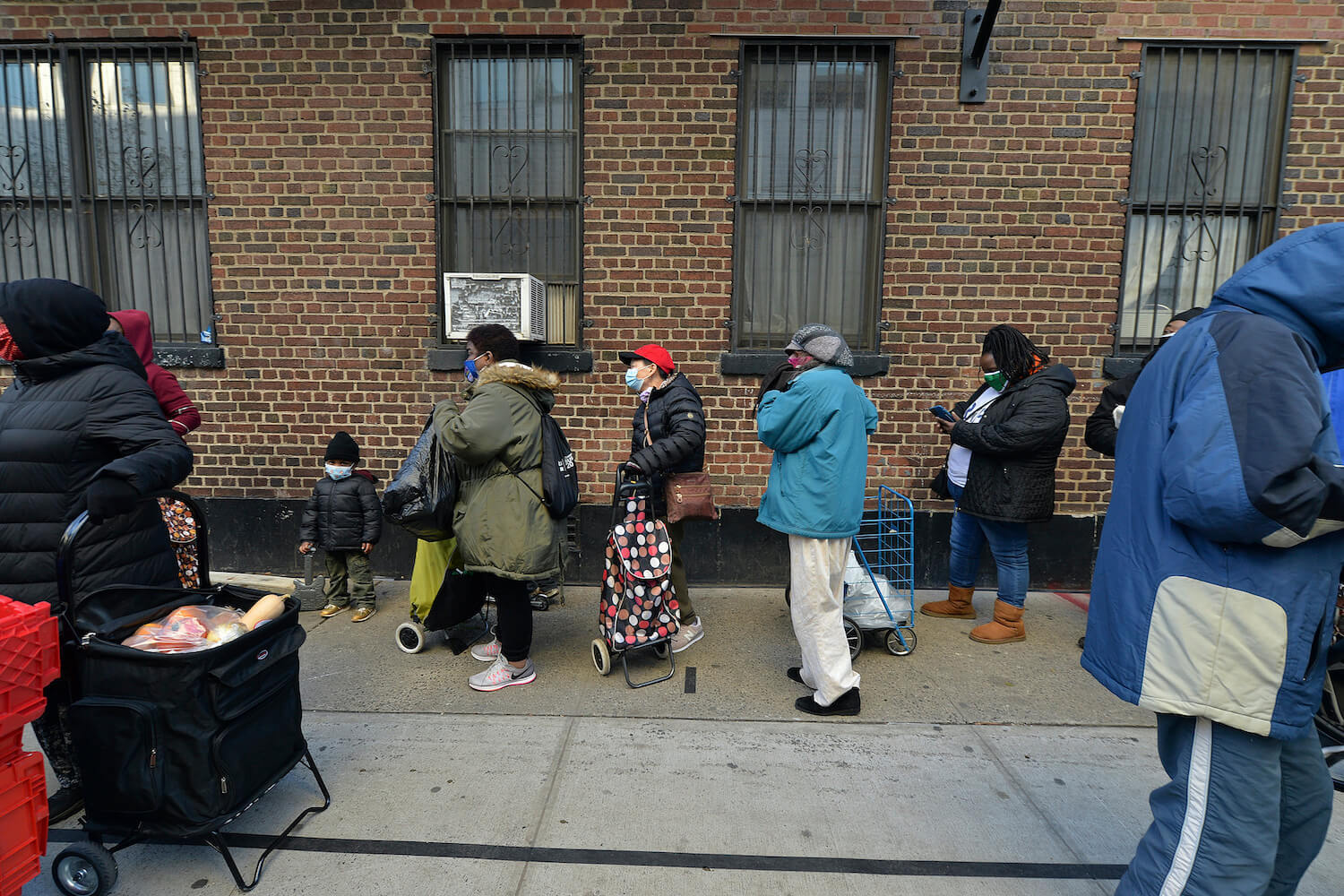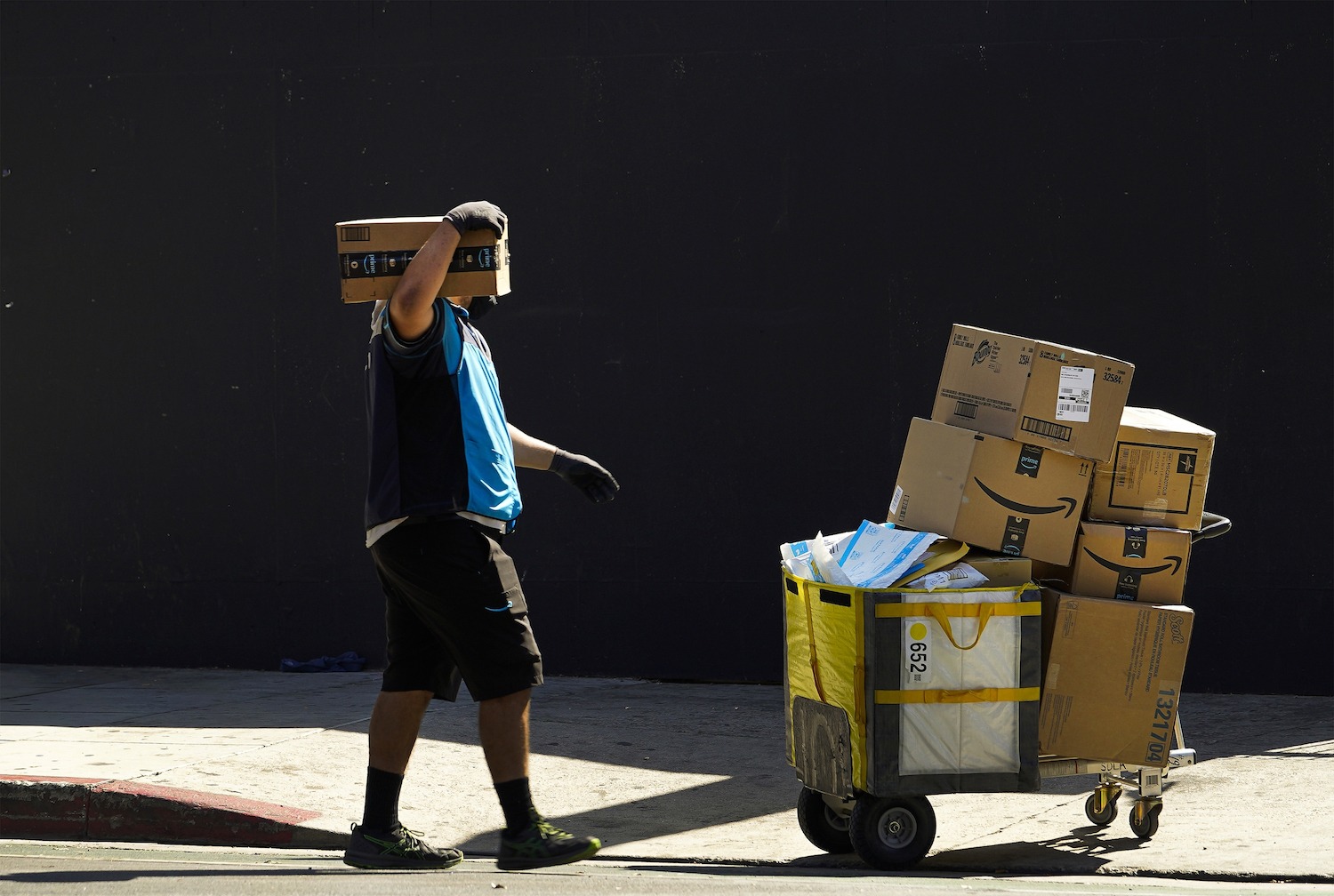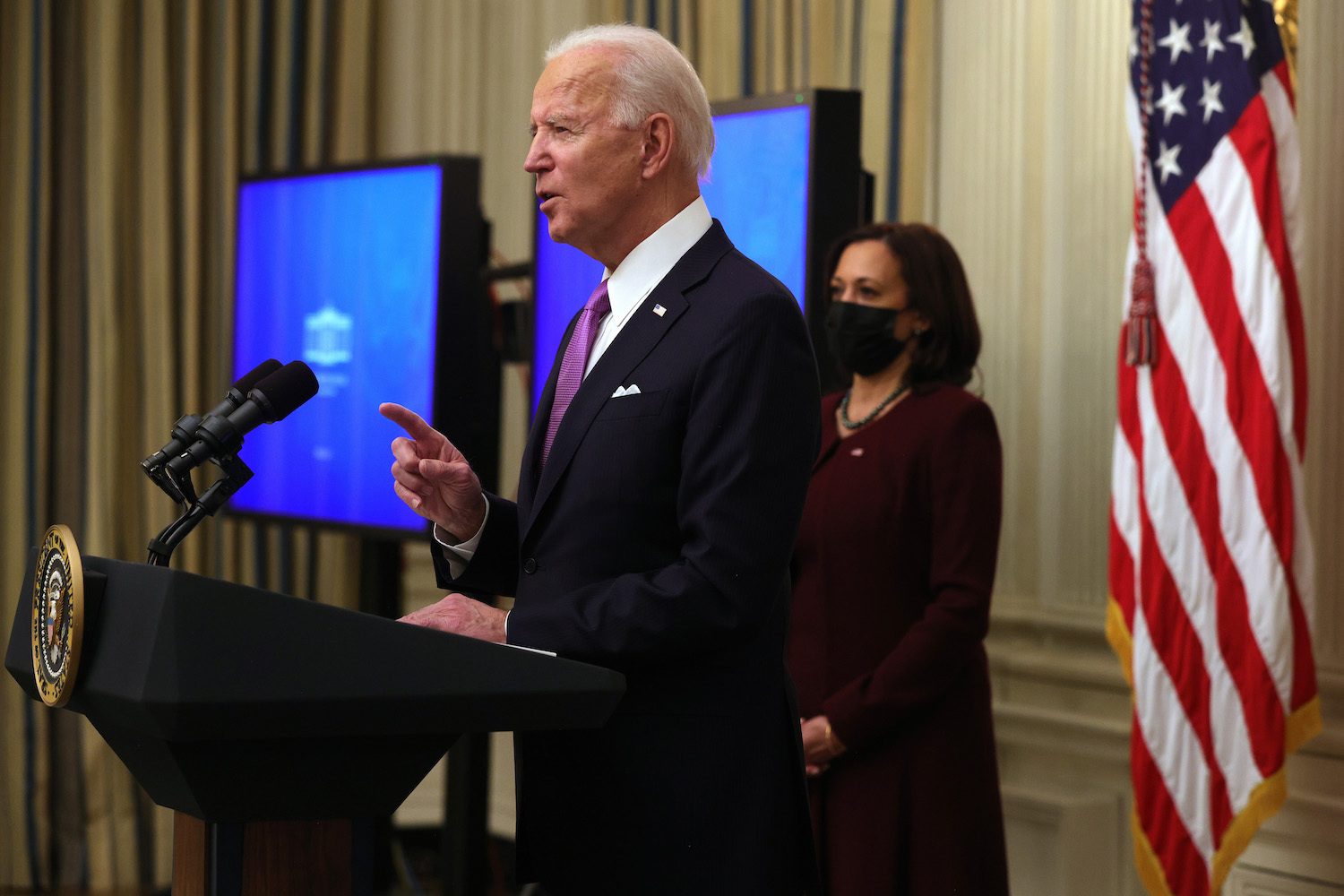
Photo by Alex Wong/Getty Images
Though intended to send additional food aid to families most impacted by the pandemic, the order could lead to a permanent expansion of the amount of money people receive each month.
President Biden on Friday will sign an Executive Order directing the Department of Agriculture (USDA) to find ways to provide additional food aid to families that rely on the Supplemental Nutrition Assistance Program (SNAP, formerly food stamps) and free school lunch.
These changes are meant to supplement the extra 15 percent in across-the-board benefits authorized by December’s stimulus package, which will run out at the end of June. They include boosting payments made to parents of schoolchildren through the Pandemic-EBT (P-EBT) program and instructing USDA to find a way to increase SNAP payments to the lowest-income families. Perhaps most significant in the long run, Biden’s administration has also directed the agency to revise the calculation that determines how much money people receive through SNAP. (This revision was mandated by the 2018 Farm Bill but has yet to materialize.)
“The fact that this is being done 48 hours after Biden took office is a sea change from what we were seeing,” said Lisa David, president and CEO of Public Health Solutions, an organization that enrolls New York City residents in SNAP and other safety net programs. Before the pandemic, her organization heard from about 1,300 people seeking to enroll in public assistance programs each month. By October, that number climbed to 5,000. “It speaks to the critical need that families are having, not being able to put food on the table.”
“The fact that this is being done 48 hours after Biden took office is a sea change from what we were seeing.”
USDA said in a press release on Friday that it would also immediately increase payments to families whose children receive free school lunch. Last spring, Congress created PEBT, a program intended to make up for the loss of school meals by providing parents with pre-loaded debit cards that maxed out at $5.86 per child per day. As Politico reported in late December, the program worked well in the spring and summer but was stymied by Congressional inaction and delays at USDA in the fall, leading to a gap in benefits for many children. The new executive order increases the per-day benefits by 15 percent, or about 88 cents per child per day.
The agency is also consulting with the Department of Justice to see if it can increase SNAP benefits for the lowest-income families. In normal times, SNAP is distributed on a sliding scale: people making the least money receive the maximum allotment, or about $680 for a family of four, and that allotment decreases as income goes up, bottoming out at $15 per month for the highest-paid single person who still qualifies.
In the spring, Congress allowed states to start sending every SNAP participant the maximum allotment. The policy didn’t provide any boost for the lowest-income people in the program—those who were already receiving the maximum benefit, an estimated 37 percent of participants. The stimulus package passed in December will increase benefits for everyone by about 15 percent, and the intent of the executive order is to find ways to further increase benefits for the lowest-income families.
A recent USDA analysis found that model grocery baskets purchased under the financial constraints of the plan resulted in foods that exceeded the Dietary Guidelines for sodium and were deficient in Vitamin E and potassium.
The executive order also instructs USDA to immediately begin the process of revising the Thrifty Food Plan. This plan forms the basis for the government’s calculation of how much it costs to eat. Its assumptions about what people eat are, as it stands, quite weird. Developed in the 1970s, the diet suggests an adult woman may need to drink three cups of milk per day to meet her nutritional needs with the money allotted. (In 2019, the plan budgeted a maximum of $38.50 per week for women ages 19 to 50.)
It has other, more serious shortcomings: A recent USDA analysis found that model grocery baskets purchased under the financial constraints of the plan resulted in foods that exceeded the Dietary Guidelines for sodium and were deficient in Vitamin E and potassium. That said, adjusting the underlying assumptions in the Thrifty Food plan could increase SNAP allotments across the board, making it easier for people to purchase healthy groceries. There’s a wide gap between the current SNAP allotment and independent estimates of the cost of food: While SNAP maxes out at $204 for a single person, MIT’s living wage calculator estimates a single person living in New York City needs to spend $290 for food each month.
Though these adjustments will undoubtedly help shorten the lines David says she’s seen at food banks in New York, Biden will need help from Congress to enact more substantial change. “The challenge is that executive orders don’t actually create new Congressional funding,” she said. “They’re restricting this to the amount that they think they can cover from monies already authorized. It’s a little bit zero sum—there’s no new money for these things,” she added. “They really need to get a new stimulus bill to truly sustain what’s happening here.”

